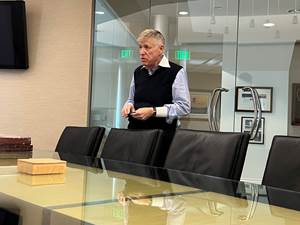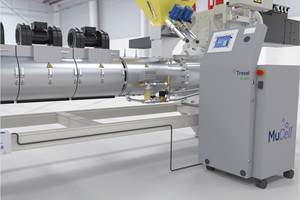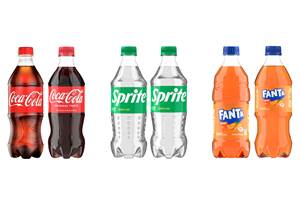Of Bans, Taxes ... and Good Publicity
It’s time for processors to be more involved in telling their story to the public.
I had an occasion recently to chat with Matt Seaholm, executive director of the A (APBA), an association that represents the U.S. plastic bag manufacturing and recycling industries. The APBA has been around since 2005 as a self-funded, special-purpose group within the Plastics Industry Association (PLASTICS), and as its website indicates “proactively promotes product lines and leads numerous public policy initiatives that serve as the frontline defense against plastic bag bans and taxes nationwide.”
As you can imagine, Matt has been busy lately, with state and local governments imposing or weighing bans or taxes of various shapes and sizes on retail bags, or what the industry calls t-shirt sacks. His task has become more frenetic as some states impose bag restrictions while municipal governments within these same states attempt to enact bans of their own—quite often, with different standards on bag thickness, recycled content, etc.
To be sure, Seaholm has the facts on his side. Banning bags, he points out, “will have no meaningful environmental impact.” He elaborates, “Bags represent less than 1% of litter and 0.3% of the waste stream. What we are dealing with here are symbolic moves that often have unintended consequences: They make trips to the grocery store more expensive. They also threaten thousands of U.S. manufacturing jobs.” The anti-bag sentiment is largely “emotional, driven by those who feel ‘we have to do something.’”
Seaholm and the APBA also spend countless hours trying to the endless stream of misinformation churned out on a regular basis. “One local lawmaker recently put in the record that ‘12 million barrels of oil a year are used in the production of plastic bags.’ The truth is, not a drop of oil goes into bag making. But this kind of misinformation spreads quickly from jurisdiction to jurisdiction. I have also heard lawmakers say that a very high percentage of bags are imported from Asia. Again, not so.”
“What we are dealing with here are symbolic moves that often have unintended consequences.”
Of course, the problems the industry faces are not just about bags. Polystyrene foam has been a target for years, PET bottles/clamshells and plastic straws more recently. Suffice to say, if it’s single-use packaging, it will be scrutinized by someone, somewhere, at some time.
I don’t want this column to veer into a discussion of who “owns” this problem and is responsible for a solution: litterbugs, bag makers, supermarkets, resin companies, recyclers, MRFs? Let’s just agree—for now at least—that the problem is complex, the solution will cost money and be multi-faceted, and no one in this supply chain (consumers included) can afford to say, “Not my problem.”
To be sure, the solution will not happen overnight, but there are steps I think all plastics processors can take to shine a more positive—and accurate—light on our industry. For starters, be proud of what you do, and brag about it. Seaholm put it like this, “We need to do better at raising the level of awareness as to the contribution our industry makes to the economy. When the APBA and its members have brought elected officials into bagmaking plants, it’s been a tremendous learning experience for them.”
One of the things that has confounded and frustrated me throughout my editorial career in plastics is why you, the plastics processor, remain a bit gunshy about telling your story. Of course there are exceptions, but while we publish monthly plant-tour articles that we call On-Site (such as the one on p. 34 of this issue), we sometimes find while pursuing story ideas that processors aren’t all comfortable about letting us into their plants. Perhaps they don’t want their competitors knowing what they are doing. Maybe they are just plain bashful.
Whatever the reason, I think it’s time to ban this way of thinking. Finally, a ban I can get behind.
Related Content
US Merchants Makes its Mark in Injection Molding
In less than a decade in injection molding, US Merchants has acquired hundreds of machines spread across facilities in California, Texas, Virginia and Arizona, with even more growth coming.
Read MoreFoam-Core Multilayer Blow Molding: How It’s Done
Learn here how to take advantage of new lightweighting and recycle utilization opportunities in consumer packaging, thanks to a collaboration of leaders in microcellular foaming and multilayer head design.
Read MoreCoca-Cola’s Redesign of Small PET Bottles Pushes Lightweighting Below Prior ‘Floor’
Coca-Cola thought it had reached the limits of lightweighting for its small PET carbonated soft drink bottles. But a “complete redesign” led to a further 12% reduction.
Read MoreThe Recycling Collaboration That Is Making Circular Film a Reality
Nova Chemicals and Novolex are commissioning a large mechanical recycling facility for film to film.
Read MoreRead Next
Lead the Conversation, Change the Conversation
Coverage of single-use plastics can be both misleading and demoralizing. Here are 10 tips for changing the perception of the plastics industry at your company and in your community.
Read MoreFor PLASTICS' CEO Seaholm, NPE to Shine Light on Sustainability Successes
With advocacy, communication and sustainability as three main pillars, Seaholm leads a trade association to NPE that ‘is more active today than we have ever been.’
Read MoreMaking the Circular Economy a Reality
Driven by brand owner demands and new worldwide legislation, the entire supply chain is working toward the shift to circularity, with some evidence the circular economy has already begun.
Read More














